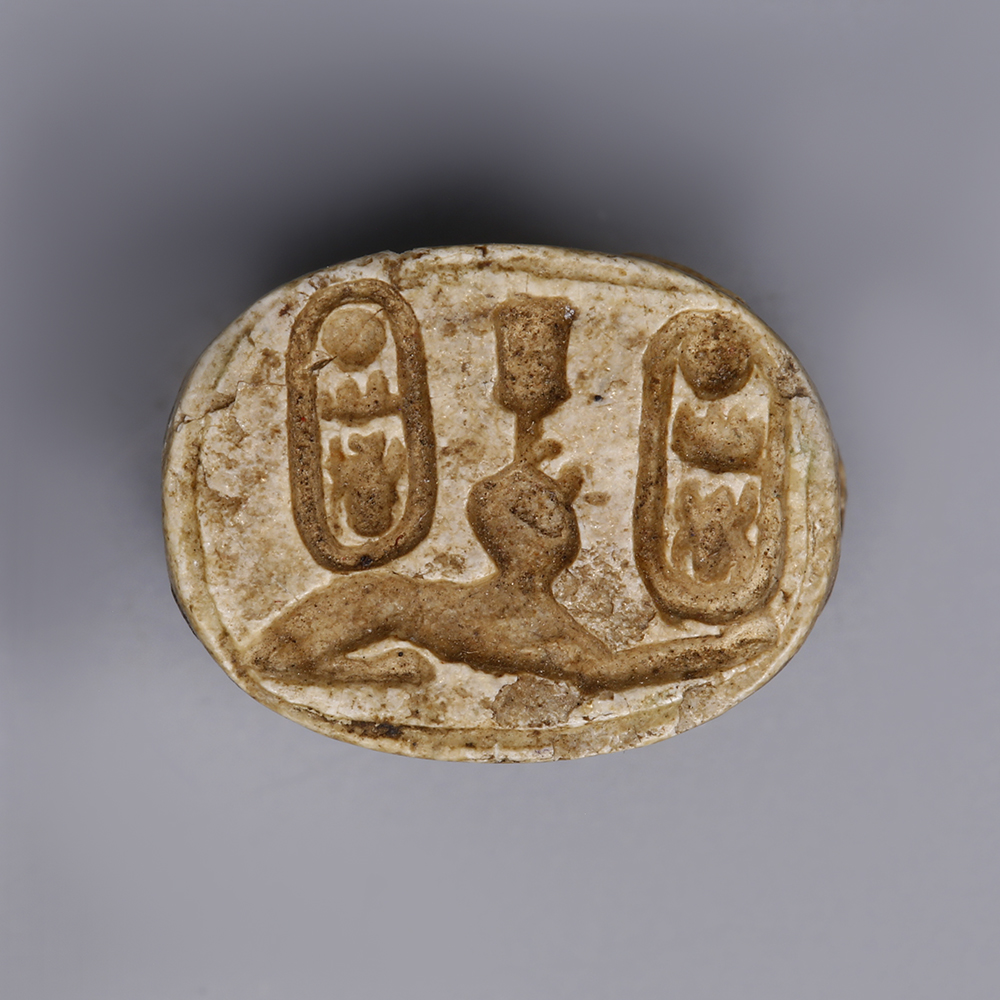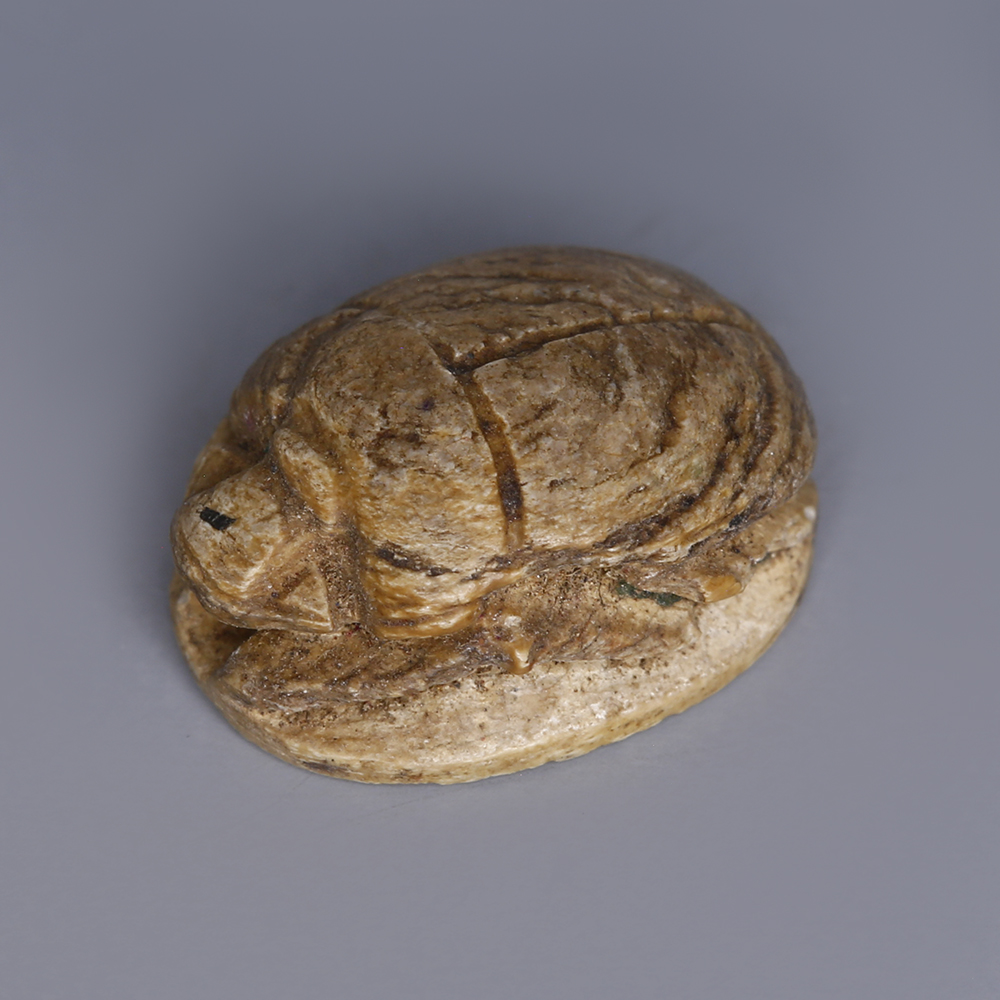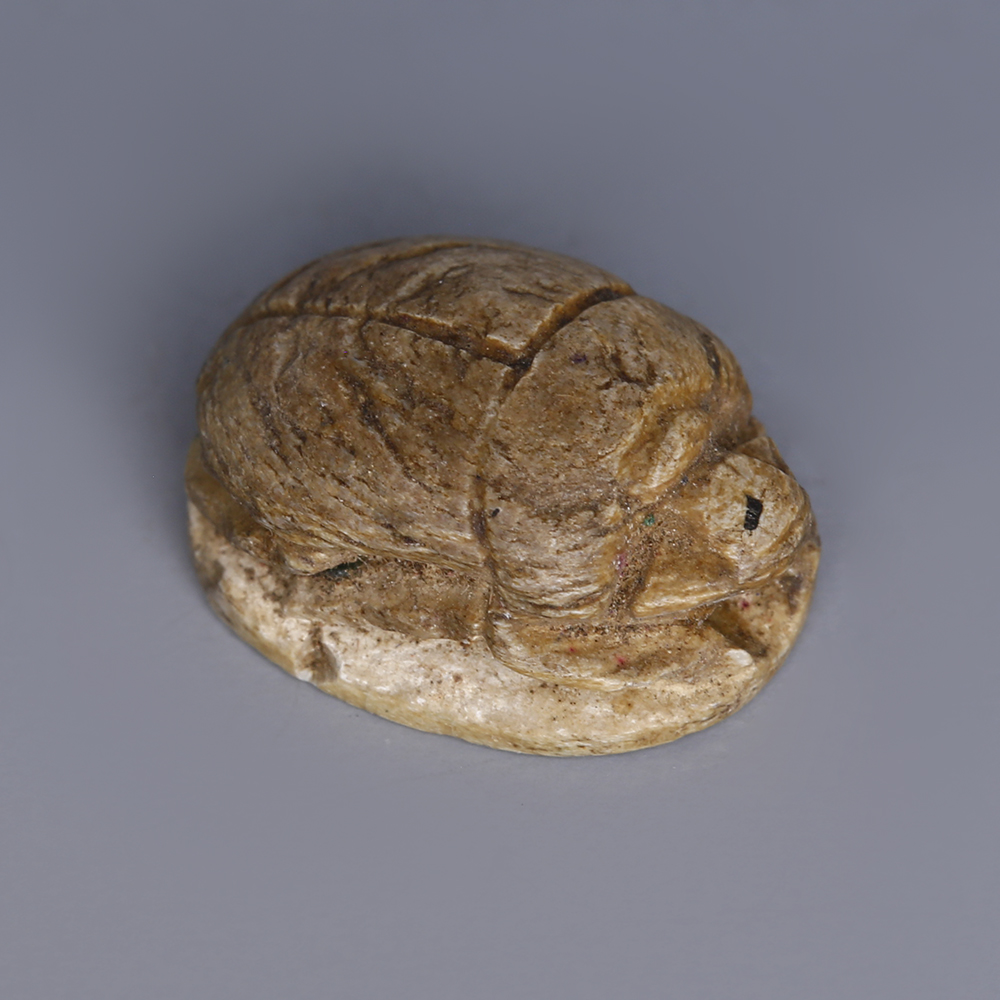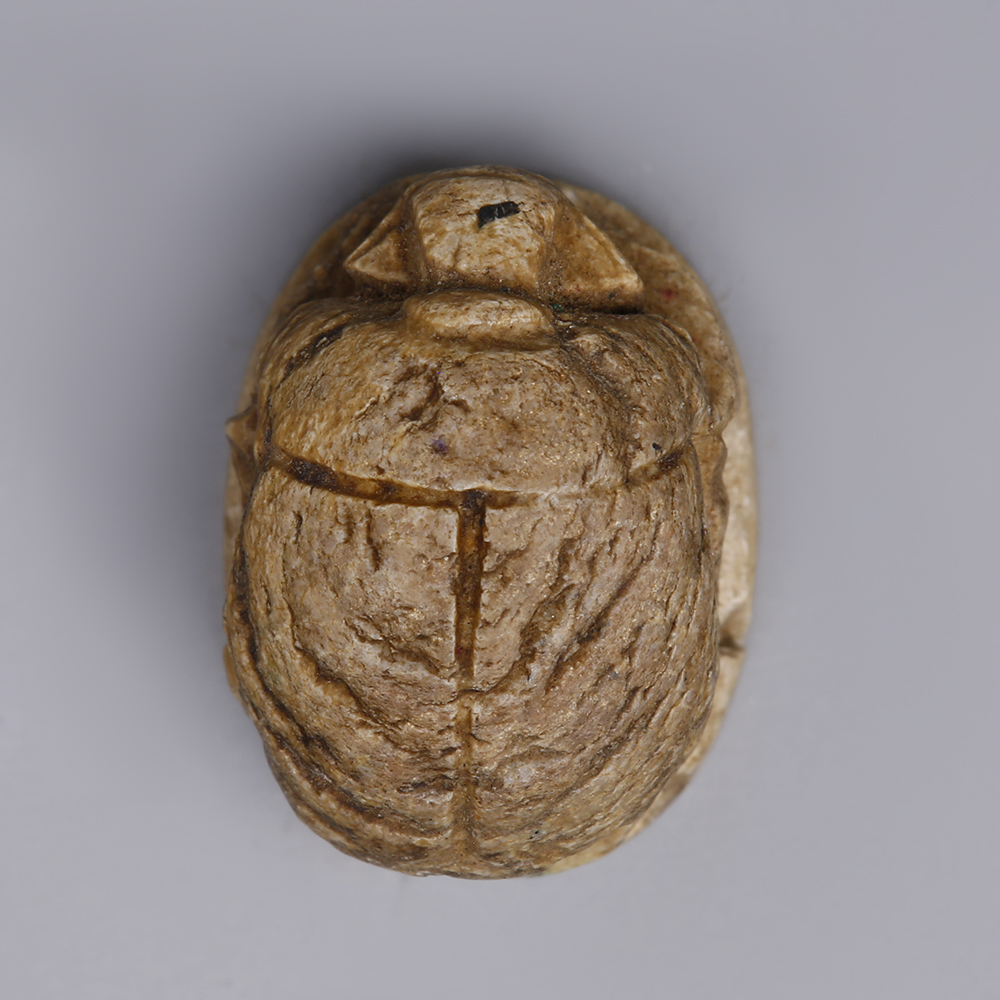Thutmosis III meaning “Thoth is born” was a New Kingdom, Dynasty 18, pharaoh from 1479-1425 BC, ascending the throne at 2 years old, he was co-regent with his aunt, Hatsheput, for the first 22 years of his reign. Following many successful military campaigns, Thutmosis III expanded the Egyptian empire to its largest extent, conquering land in Syria and Nubia. Thutmosis III’s reign also saw some significant developments in the arts including new forms in monument and sculpture.
Not all scarabs bearing a royal name are contemporaneous to the ruling pharaoh. Some kings were held in particularly high regard, and thus their name appears on scarabs hundreds of years after their reign. Thutmosis III of Dynasty XVIII was particularly honoured in this way, with his praenomen, Men-Kheper-Re, used on scarabs for a period of circa 1000 years. Men-Kheper-Re translates as ‘Established by the image of Re’.
To find out more about Ancient Egyptian amulets please see our relevant blog post: Egyptian Amulets and their Meanings.



